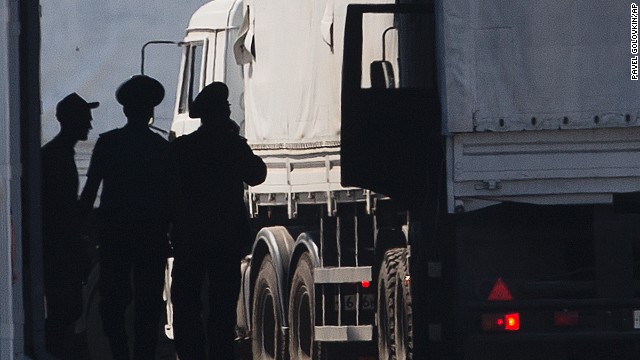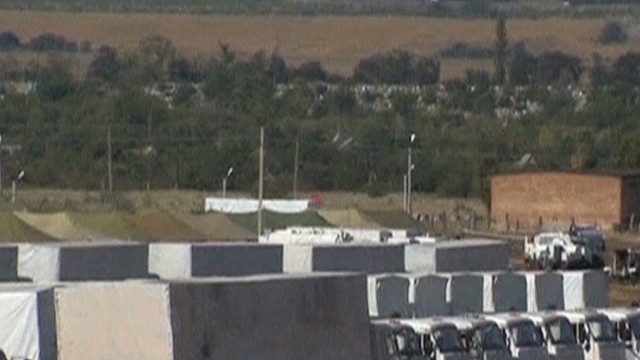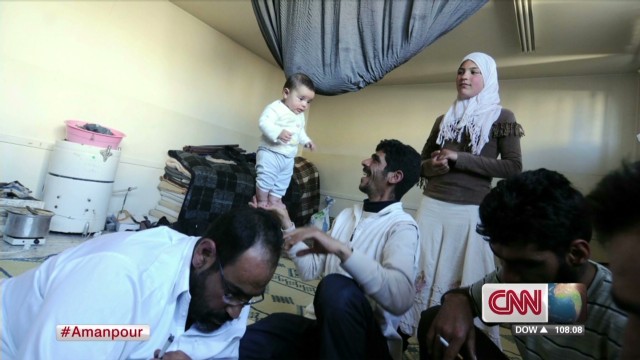Story highlights
- Photojournalist Jonathan Alpeyrie returned to Donetsk, Ukraine, two weeks ago
- Donetsk is held by pro-Russian rebels but the Ukrainian Army has gradually encircled it
- Alpeyrie's photographs show the life of the residents surviving under siege
- The images show them sheltering in cellars or clearing rubble from their homes
Bodies torn apart by the weapons of war. The bloody corpse of a man hit by shelling as he walked under trees, a shopkeeper's mutilated body in front of her store, a broom lying nearby.
Some three months after pro-Russian rebels declared an independent "Donetsk People's Republic," Ukrainian government forces are encircling the city of Donetsk.
Photojournalist Jonathan Alpeyrie was in the city in May and returned two weeks ago to find it battle-scarred and slowly draining of life as its people flee.
The images he has captured show the anguish of the immediate aftermath of shelling -- the relatives of victims, people left homeless, the dead. Others depict those left behind sheltering in Soviet or WWII-era cellars and boarded-up buildings as their homes are engulfed by the conflict.
The photographs, many too graphic to show here, leave no doubt about the true horror of the destructive conflict.
"If you go north of the city towards the airport you have entire areas that are no-man's land -- they are not controlled by anybody and they are being shelled daily ... with mortars and tanks," Alpeyrie tells CNN.
"You see some families that have remained there -- mostly elders and a lot of people that don't really have any money, they have to stay. You also get people who stay because they don't want to leave their homes. It's been their family home for a long time and they have their belongings inside, so they want to stay close to that. "You do have a lot of elders who are pretty tough and they're very pro-Russian, so for them that's also their struggle but a lot of them are hoping that this will end quickly."
The center of Donetsk, in peacetime much like any other modern city, is less damaged, though suffering from water shortages and largely shut down, he says, abandoned by an estimated half of Donetsk's population of around one million. "People do get killed. If you're walking down the street it's like a lottery, you just don't know," Alpeyrie says.
The day before Alpeyrie spoke to CNN, the group he was with -- fellow photographers and a local driver/translator -- had almost been killed in the town of Marynivka. Four people died nearby.
"It's always hard when we see people getting killed where you are, that's tough, because they're just regular people and they're not really involved in the war," he says.
The team's driver was one of the residents trying to earn a living while it was still possible. Many of those still facing the dangers of Donetsk have sent their children away, Alpeyrie says. The trains have stopped running from Donetsk, so the refugees travel by bus, many making the perilous journey through fighting in Luhansk region to reach Russia.
Others go south to Mariupol, traveling through the conflict's front line to safety, Alpeyrie says.
There, where the fighting is at its most intense, photography is not welcomed by the rebels.
"You can hang out with them if you want, but since just they get hit all the time and as you can't take pictures or photos there's no reason to hang out with them," Alpeyrie says.
However, recently Alpeyrie and some colleagues got lucky -- obtaining rare images of a rebel funeral.

































